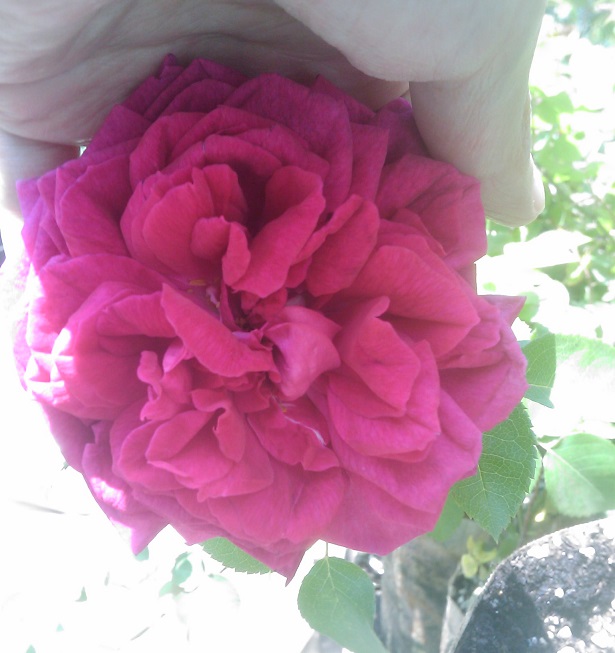Meet the blue crew, scientists trying to give food, flowers, and more a color rarely found in nature
“KYOTO, JAPAN—In 2004, Japanese researchers unveiled what they billed as the world’s first blue rose. The only problem with the flower: It wasn’t very blue…Tanaka is confident he will develop bluer roses before his retirement, only 5 years away, but almost 30 years of pursuing his quest have also taught him to be cautious: ‘It is hard to say how blue they will be.’”
It is truly amazing (I think) that blue is such a difficult color to achieve in flowers, but is accomplished just the same in a variety of ways. The ‘Heavenly Blue’ morning glory is a fine blue. So is the little day flower, Commelina communis, and the even smaller Veronica persica Poiret. Yet these plants achieve the color by very different means.
http://bulbnrose.x10.mx/Heredity/King/RosePigments/FloweringBlues.html
Regarding delphinidin, it has been found in the Rosaceae, in Chinese Rubus spp. and traces in the fruit of the ‘Cresthaven’ peach. These sources do not appear to be immediately helpful.
http://bulbnrose.x10.mx/Heredity/King/RosePigments/LiRubus2002.html
https://onlinelibrary.wiley.com/doi/abs/10.1111/j.1365-2621.1989.tb05968.x
Novruzov and Shamsizade (2022) reported finding, “… cyanidin-3-glucoside, cyanidin-3,5-diglucoside, delphinidin-3-glucoside, and delphinidin-3,5-diglucoside were identified for the first time in total anthocyanins from fruit pulp of R. hracziana using chromatography, spectroscopy, total and stepwise hydrolysis, oxidation by H2O2, and comparison with authentic samples.”
Some of the nearest almost bluish roses rely on a couple of complex pigments (based on cyanin) called rosacyanins. Some examples are Grey Pearl, Sterling Silver, Blue Moon and Mme Violet.
Yuko Fukui and Yoshikazu Tanaka received a patent for delphinidin-based rosacyanins that approach blue somewhat more than the cyanidin-based forms.
The most “blue” I have seen is Turn Blue.


